|
Appeal to preserve important antiquities in the Thessaloniki Metro and petition, 5/2/2013
Athens, 01/03/2013
Appeal to preserve important antiquities in the Thessaloniki Metro Archaeologists have brought to light the heart of Byzantine Thessaloniki during the construction of the city’s underground railway network. The finds are remarkably intact and include: a 76-metre section of the city’s main paved road (decumanus) which was found in excellent condition, built remains dating from the 6th-9th century AD, and—most rarely of all—large public structures from the 7th century. Since both the Byzantine main road and the new Metro tunnel run under modern-day Egnatia Street (at depths of 6 and c.11 metres respectively), they provide an excellent snapshot of Thessaloniki’s built development over the centuries in which different eras from the city’s past and present can be viewed side by side. Despite appeals made by the Association of Greek Archaeologists for the issue to be reexamined, the Ministry of Education and Religious Affairs, Culture and Sports has decided to have the antiquities detached and moved. This decision, which concurs with the proposals put forward by the technical staff of ATTIKO METRO SA, would deprive the city of the potential to create a unique archaeological site within a Metro station. We believe the issue should be taken up by the entire academic community, as well as by the people of Thessaloniki, since:
For all the above reasons, the Association of Greek Archaeologists requests that the decision to move the antiquities to the Pavlos Melas barracks be re-examined and that every effort be made to find a technical solution which would allow them to be preserved in situ as a visitable archaeological site inside Venizelos Metro station.
ASSOCIATION OF GREEK ARCHAEOLOGISTS PETITION FOR THE PRESERVATION OF IMPORTANT ANTIQUITIES AT THE HEART OF ROMAN AND BYZANTINE THESSALONIKI Ο Σύλλογος Ελλήνων Αρχαιολόγων κάνει διεθνή έκκληση για τη ΔΙΑΣΩΣΗ ΚΑΙ ΣΥΝΥΠΑΡΞΗ ΤΩΝ ΜΟΝΑΔΙΚΩΝ ΜΝΗΜΕΙΩΝ 4ου-9ου αιώνα με το ΣΤΑΘΜΟ ΜΕΤΡΟ στη ΒΕΝΙΖΕΛΟΥ, το διαχρονικό ιστορικό & εμπορικό κέντρο της ΘΕΣΣΑΛΟΝΙΚΗΣ. ΠΑΡΑΚΑΛΟΥΜΕ ΥΠΟΓΡΑΨΤΕ ΗΛΕΚΤΡΟΝΙΚΑ & ΔΙΑΔΩΣΤΕ το ΣΥΝΔΕΣΜΟ της ΕΚΚΛΗΣΗΣ (petition) ) ΜΕΣΩ ΤΩΝ ΕΠΑΦΩΝ ΣΑΣ σε E-mail και άλλα κοινωνικά δίκτυα.
http://www.avaaz.org/en/petiti
|
| Συνημμένα αρχεία: |
| On the central crossroad of Thessaloniki 4.2.2013.doc |
| Text and photos Venizelou.pdf |
| ΕΛΛ.ΕΤ.ΠΕΡΙΒΑΛΛΟΝΤΟΣ-ΠΟΛΙΤΙΣΜΟΥ.pdf |
| ΚΕΝΤΡΟ ΒΥΖΑΝΤΙΝΩΝ ΕΡΕΥΝΩΝ.pdf |
| ΧΡΙΣΤΙΑΝΙΚΗ ΑΡΧΑΙΟΛΟΓΙΚΗ ΕΤΑΙΡΕΙΑ.doc |
| ΣΥΛΛΟΓΟΣ ΑΡΧΙΤΕΚΤΟΝΩΝ ΘΕΣΣΑΛΟΝΙΚΗΣ.doc |
Πηγή: http://www.sea.org.gr/press/pages/viewpress.aspx?PressID=137

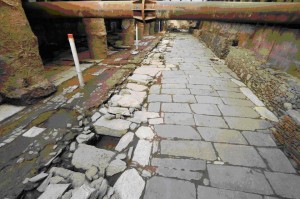
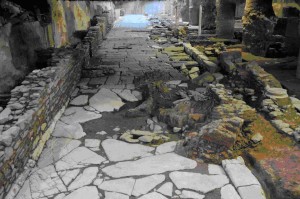
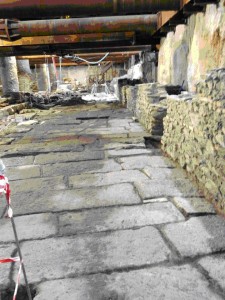
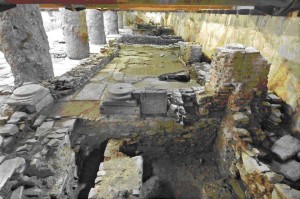
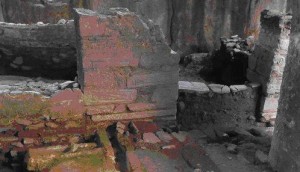
4 comments
Όλοι οι Έλληνες σύσσωμοι πρέπει να δείξουμε την ανάλογη ευαισθησία και ενδιαφέρον για την σωτηρία της πολιτιστικής μας κληρονομιάς και ένδοξης ιστορίας. Ας μην περιμένουμε τους Ξένους να κάνουν αυτό που πρέπει να κάνουμε εμείς.
ΦΤΑΝΟΥΝ ΠΙΑ ΟΙ ΕΠΙΚΛΗΣΕΙΣ ΚΑΙ ΟΛΑ ΑΥΤΑ ΜΕΣΩ ΤΩΝ ΒΟΥΒΩΝ ΜΕΣΩΝ ΕΠΙΚΟΙΝΩΝΙΑΣ …ΓΙΑ ΜΕΝΑ ΤΟ ΑΠΟΤΕΛΕΣΜΑ ΕΙΝΑΙ ΕΝΑ …ΟΣΟ ΑΥΞΑΝΟΝΤΕ ΟΙ ΡΥΘΜΟΙ ΟΙ ΕΝΤΑΣΕΙΣ ΚΑΙ ΟΙ ΤΑΧΥΤΗΤΕΣ ΤΗΣ ΕΠΙΚΟΙΝΩΝΙΑΣ ΜΕ ΤΟΝ ΠΑΡΟΝΤΑ ΤΡΟΠΟ ΚΑΙ ΜΟΝΟΝ ΕΙΝΑΙ ΕΠΟΜΕΝΟ ΝΑ ΕΠΙΚΑΛΟΥΜΕΘΑ ΤΗΣ ΒΟΗΘΕΙΑΣ ΚΑΠΟΙΩΝ ΑΛΛΩΝ ΞΕΝΩΝ …ΕΙΜΑΙ ΦΑΝΑΤΙΚΟΣ ΟΠΑΔΟΣ ΤΗΣ ΦΥΣΙΚΗΣ ΠΑΡΟΥΣΙΑΣ ΚΑΙ ΤΗΣ ΠΡΟΒΟΛΗΣ ΟΛΩΝ ΑΥΤΩΝ ΤΩΝ ΠΡΟΒΛΗΜΑΤΩΝ ΜΕΣΑ ΑΠΟ ΜΕΓΑΛΕΣ ΣΥΓΚΕΝΤΡΩΣΕΙΣ ΣΕ ΧΩΡΟΥΣ ΠΟΛΙΤΙΣΜΟΥ .ΠΑΝΤΑ ΠΕΡΙΜΕΝΟΥΜΕ ΤΟΥΣ ΞΕΝΟΥΣ ΝΑ ΔΟΥΛΕΨΟΥΝ ΓΙΑ ΜΑΣ …ΔΥΣΤΥΧΩΣ ΖΟΥΜΕ ΣΤΗΝ ΕΠΟΧΗ ΟΠΟΥ ΤΗΝ ΦΙΛΤΑΤΗ ΜΑΣ ΠΕΤΡΙΔΑ ΚΑΤΑΚΛΥΖΟΥΝ ΑΠΑΤΡΙΔΕΣ ,ΑΝΘΕΛΛΗΝΕΣ ΚΑΙ ΥΠΟΝΟΜΕΥΤΑΙ ΤΟΥ ΕΘΝΟΥΣ…ΑΣ ΠΡΟΧΩΡΗΣΟΥΜΕ ΜΟΝΟΙ Σ ΑΥΤΟ ΠΟΥ ΥΠΟΧΡΕΟΥΜΕΘΑ ΝΑ ΠΡΑΞΟΥΜΕ !!!!
Αφήστε να φανεί ο ελληνισμός μέσα από την ιστορία και τον πολιτισμό μας. Μην χάνουμε κι αυτά που είμαστε τυχεροί να έχουμε.
Η καταστροφή της ιστορικής μνήμης είναι το υπερόπλο της παγκοσμιοποίησης και της πολτοποίησης των εθνών. Επιταχύνει την απώλεια της εθνικής μνήμης και συνεπώς ελαχιστοποιεί την αντίσταση στον νεοφιλελευθερισμό και την νέα παγκόσμια τάξη.